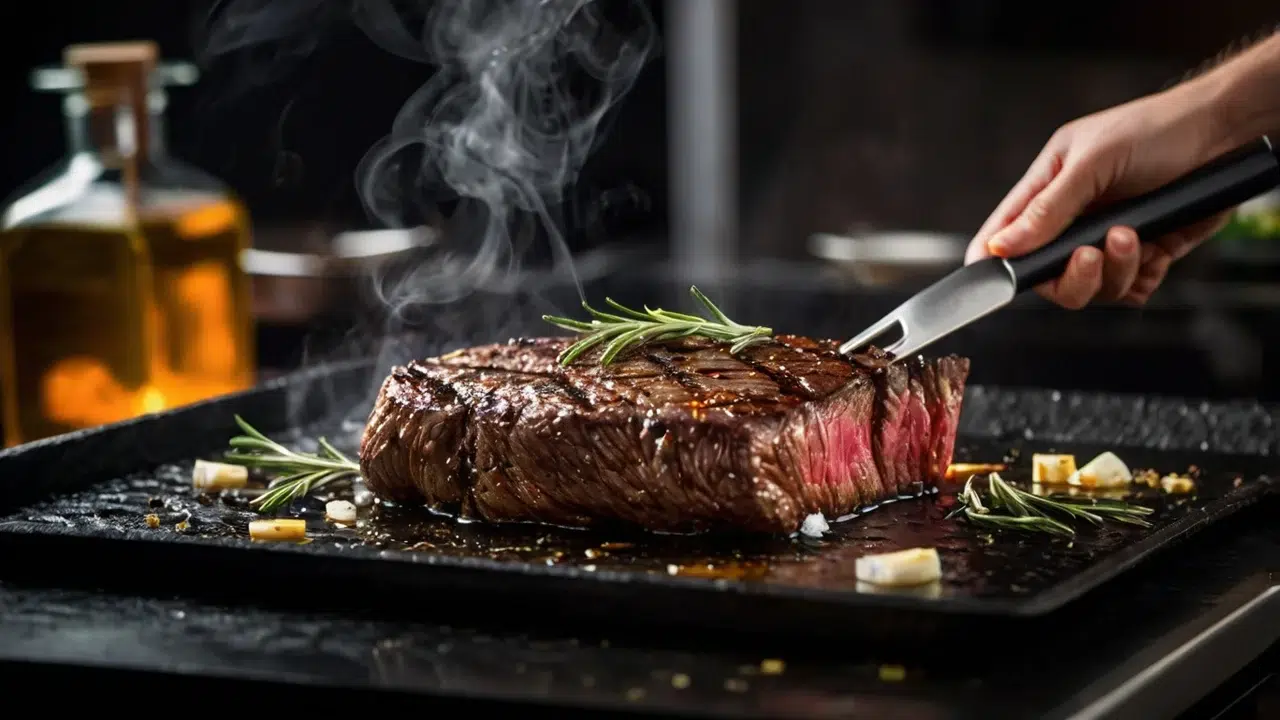Choosing the right cut of meat is crucial for a perfect steak. Cuts with high-fat content like ribeye, T-bone, and filet mignon are tender and juicy when cooked. Ribeye offers an intense flavor due to its marbling, while the T-bone provides a dual experience with both filet and strip steak. Filet mignon, though leaner, is known for its tenderness. The freshness of the meat, its color, and the brightness of the fat are also important for making the right choice.
How to Marinate a Steak? Methods to Add Flavor
Marination is one of the most effective ways to add flavor and tenderness to the meat. Olive oil, garlic, rosemary, thyme, salt, and pepper are commonly used in marinades. The marinade should be massaged into the steak and left in the refrigerator for at least 2 hours, ideally overnight. During this time, the spices penetrate the meat, making it more aromatic and juicy. Acidic ingredients like red wine, vinegar, or lemon juice can also be used, but they should be handled carefully as they can alter the texture of the meat.
Which Temperature Levels Should Be Used When Cooking Steak?
Using the right temperature is key to achieving the perfect steak. High heat helps sear the outside of the meat while keeping the inside juicy. Grill or cast iron pan surfaces that can handle high temperatures are preferred. Using a meat thermometer helps control the cooking. For example, for rare steak, the internal temperature should be around 52°C (125°F), and for medium, it should reach 60°C (140°F). These temperatures help keep the steak tender and flavorful without overcooking.
Rare, Medium, Well-Done: How to Differentiate Steak Doneness Levels?
Steak doneness directly affects its flavor and tenderness. Rare steak has a red, juicy center and an internal temperature of around 52°C (125°F). Medium steak has a slightly pink center and is a balanced option, with an internal temperature of around 60°C (140°F). Well-done steak is fully cooked with a gray-brown interior and a relatively dry texture, reaching an internal temperature of 71°C (160°F). Each level of doneness is a personal preference, as the texture and flavor are directly related to the cooking time.
How Long Should a Steak Rest and Why Is It Important?
After cooking, a steak should rest for at least 5 to 10 minutes. This rest period allows the juices to redistribute within the meat, making each bite juicier. Cutting the steak immediately causes the juices to escape, leaving the meat dry. Covering the steak loosely with foil during this time helps retain its heat and ensures the best result.
Should You Use a Pan or a Grill for Cooking Steak?
When choosing between a pan and a grill, it’s important to consider the cut of meat and personal preferences. A grill adds a unique smoky flavor to the exterior of the meat, while a pan allows for more controlled heat and even caramelization. A cast-iron skillet is ideal as it distributes heat evenly. Whichever method you choose, searing the meat quickly over high heat helps create a crispy exterior while keeping the inside juicy.
Which Spices and Oils Add the Best Flavor to Steak?
Salt and pepper are the essential seasonings for cooking steak, as they enhance the natural flavor of the meat without overpowering it. They can be applied before and after cooking. Garlic, fresh rosemary, thyme, and bay leaves also add extra aroma. Butter or olive oil used during cooking helps create a crispy, flavorful exterior. Butter melts and infuses the steak with richness, especially when combined with garlic and herbs.
How to Slice a Steak? Correct Cutting Techniques
Slicing a steak after cooking is an important step that influences its tenderness. Cutting against the grain (the fibers of the meat) results in more tender bites. Thin slices may cause the steak to cool down quickly, while thicker slices help retain its juices. Using a sharp knife ensures clean slices without distorting the shape of the meat. Once placed on the cutting board, making precise, clear cuts preserves the flavors developed during cooking.



No Comments